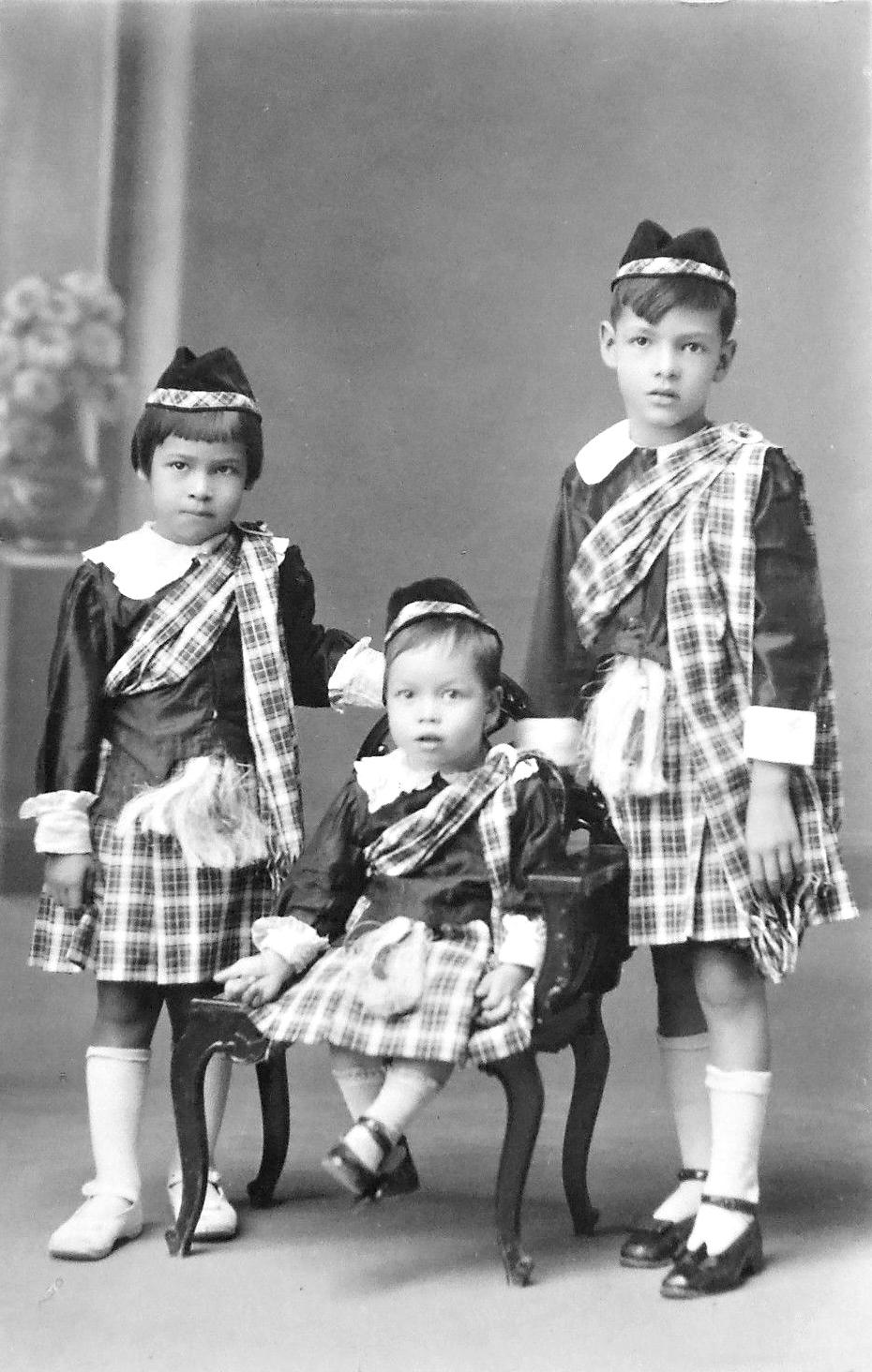
Unidentified Manila Family (early-1920s)

Figure 1.--We note one unidentified family which appears to be a marriage, probably between an American man presumably with Scottish ancestors and a Filipina. The marriage must have taken place some time after the United States seized the Philippines from Spain (1898). They had three children. And they appear to be well to do because they could afford to dress the children up in elaborate costumes. To see the Baguio portrait complete with handicrafts and sharp spear, put your cursor on the image. Photographer: Sun Studio, Manila.
|
|
We do not yet have much information on Flipino families. We note one unidentified family which appears to be a marriage, probably between an American presumably with Scottish ancestors and a Filipina. The marriage must have taken place some time after the United States seized the Philippines from Spain (1898). The Atura postcard back stamp box date the potrait to the 1910s or early-20s (1910-24). There were three children, about 2-8 years in age. The older boy may be a child from a previous state-side marriage. And they appear to be a well-to-do family because they could afford to dress the children up in elaborate costumes. Here we see the Scottish Highland outfits the childten wore (figure 1). The Scottish costumes in particular would have been expensive. They are not imported items, but clearly made locally, but still it would have cost some money. Whoever ordered them had some knowledge of Scottish Higland dress, there is even an attempt at a sporan. Probably they had some photographs or magazine images to show the Manila seamstress which made them. A second potait at the same studio, but about a year later shows the childrn dressed up in Baguio tribal costumes. Perhaps mother was Baguio. Baguio today is best known as a city in northern Luzon. Baguio a kind of melting pot of the Cordillera (mountain) tribes who often refer to themslves as highlanders. The largest tribe is the Igorots who are known for their woven cloths and baskets, and wood carvings which are on display in the portrait. To see the children in their Baguio costumes, put your cursor on the figure 1 image. It is interesting that Filipino tribal traditions have been embraced by this American-Filipino family. This enlighted attitude at the time was not very ommon evem among the Filapono people. This portrait had a AZO two triangels up and two triangles down stamp box which dates it to 1918-30. This helps date the portrait to the late-1910s or early-20s.
The only thing else we know about the family was that they lived in Manila, not in Baguio.
HBC

Navigate the Boys' Historical Clothing Web Site:
[Return to the Main Philippines page]
[Return to the Main Oceania page]
[Return to the Main countries page]
[Introduction]
[Activities]
[Biographies]
[Chronology]
[Cloth and textiles]
[Clothing styles]
[Countries]
[Topics]
[Bibliographies]
[Contributions]
[FAQs]
[Glossaries]
[Images]
[Links]
[Registration]
[Tools]
[Boys' Clothing Home]
Created: 10:17 AM 9/29/2017
Last updated: 10:17 AM 9/29/2017



